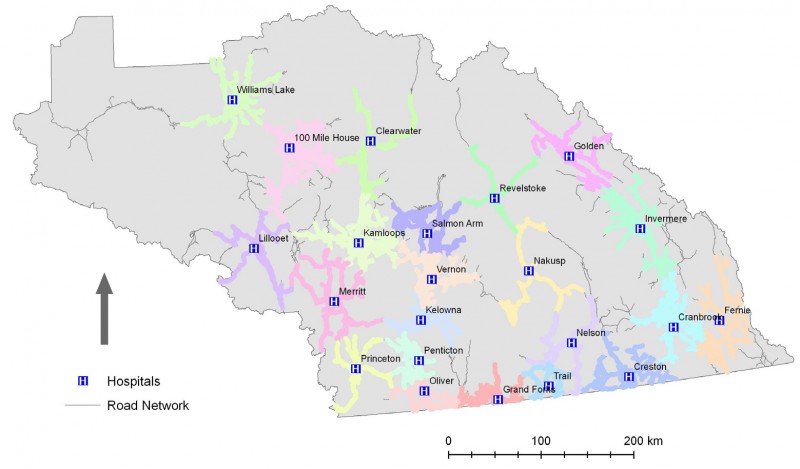7.3: Case Study 1- The "Golden Hour" and Access to Health Care
- Page ID
- 22010
A significant, but often overlooked, public health concern that could benefit from public health surveillance is that of injury.
Although injury does transcend socio-economic status, age, sex and other dimensions of difference, noticeable variations do exist. Analysis of injury data has revealed that particular age groups, social classes, and geographic locations are disproportionately suffering injuries. Through injury surveillance it is possible to identify causes of injury and appropriate evidence-based injury prevention efforts to be implemented that may target the affected population group or location (Cinnamon, 2013).
Professor Nadine Schuurman [1] and her research group have made great strides in injury surveillance research. Schuurman and her colleagues (2006) created a model to show hospital catchment areas in rural BC. Their model implemented spatial road network analysis combined with population data to represent access to hospital-based care services and travel time for the population. The model shows the spatial distribution of the “golden hour.” In acute trauma, receiving medical treatment within one “golden hour” will greatly increase an individual’s chance of survival. This model takes into account the unique geographic features in BC such as mountains and large water bodies that influence the time it takes to get to a hospital in rural areas of BC.

Attributions
- Figure 7.1. One-hour service areas for all hospitals in rural British Columbia by Schuurman, Fiedler, Grzybowski and Gund (http://www.biomedcentral.com/content/pdf/1476-072x-5-43.pdf) used under CC-BY 2.0 license (http://creativecommons.org/licenses/by/2.0/)
- Professor Nadine Schuurman http://www.sfu.ca/gis/schuurman/↵

